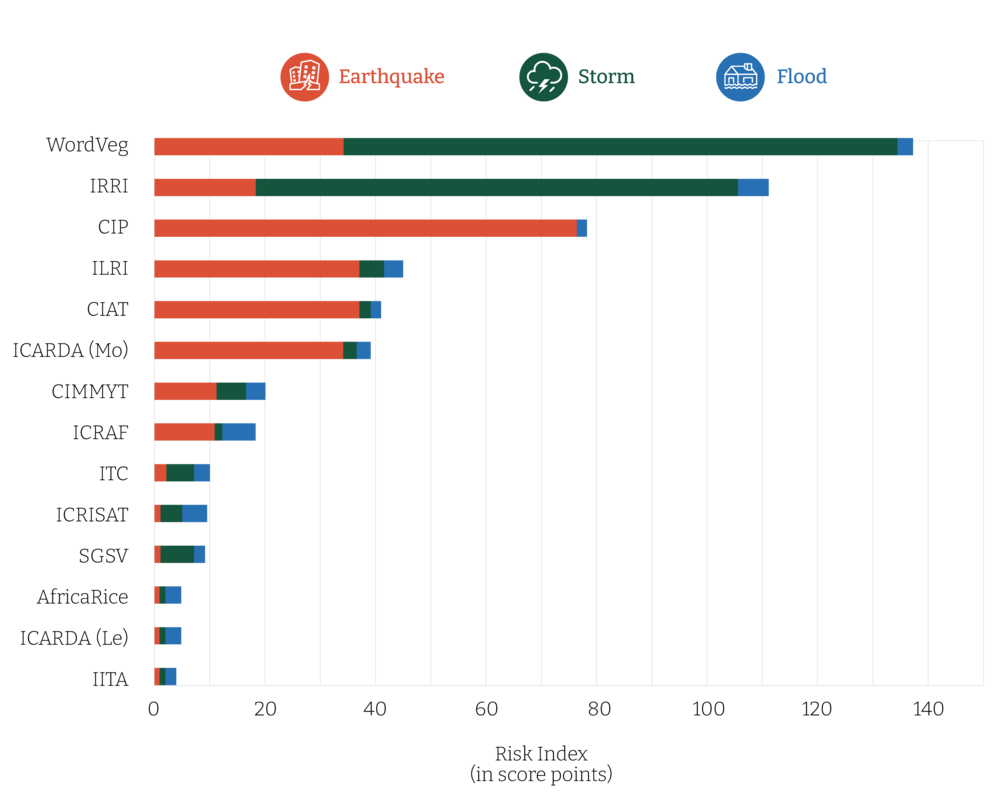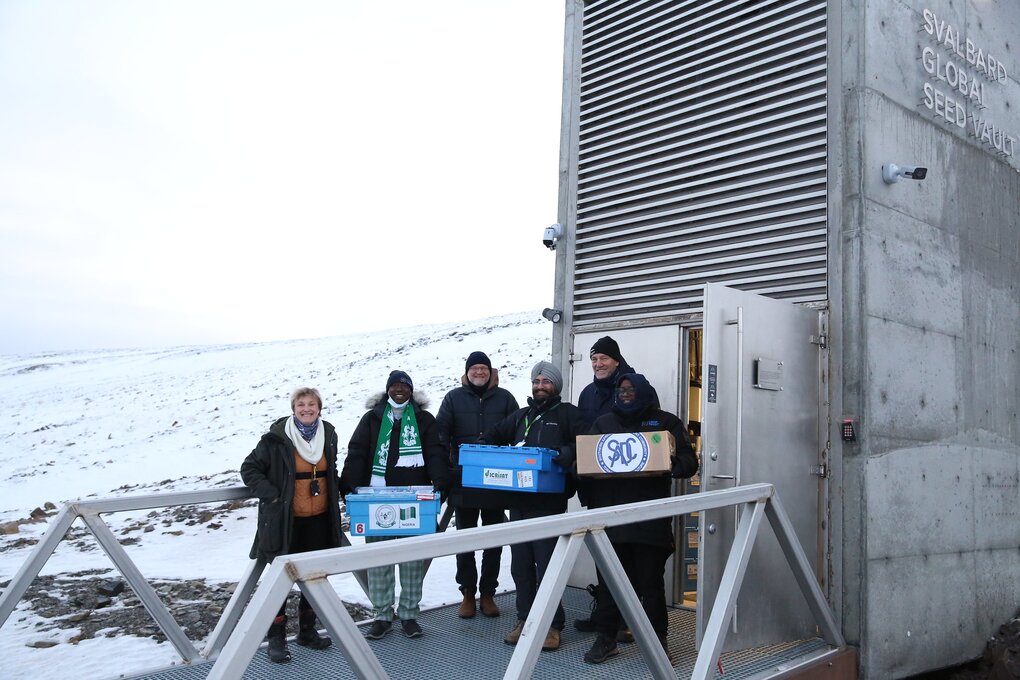Risky Business: Safeguarding Crop Diversity in Genebanks

Photo by Chandler Cruttenden on Unsplash
15 April 2024
Ensuring food security and the resilience of agriculture against environmental challenges relies on the preservation and use of crop diversity. Genebanks are the ultimate guardians of this diversity. However, they face a myriad of risks that could compromise their invaluable contents.
There is a pressing need for the systematic assessment and management of risk in genebanks. Jan Engels and I looked at 80 genebanks worldwide and their threats: natural hazards, political instability, and financial challenges. The genebanks we analysed hold at least 4.78 million accessions, or roughly 65% of the reported total of ex situ conserved accessions worldwide.
One striking revelation is the regional variation in risk exposure.

Natural hazard exposure for sampled genebanks and the risk scores/indexes for the three hazard groups—earthquake, storm, and flood.
Genebanks in Asia-Pacific are particularly susceptible to natural hazards, while those in Africa and certain parts of Asia face heightened political risks.
So, how can genebanks navigate these risks and ensure the preservation of crop diversity for future generations?
The first line of defense is preventing or mitigating risk. Strengthening infrastructure and maintaining safety duplicates of accessions is paramount. The Svalbard Global Seed Vault serves as a crucial safety net in the event of catastrophic loss.

Svalbard Deposit October 2023 (Photo: LM Salazar/Crop Trust)
However, not all risks can be prevented or mitigated.
This is where risk transfer solutions come into play. Mechanisms like insurance schemes and funds offer a means to transfer risks to third parties, providing a safety net in times of crisis, and the certainty of funds being available for recovery. While currently underutilized, these solutions hold immense potential for minimizing collection loss and ensuring swift recovery post-disaster. An example of this is the Emergency Reserve Fund.
Despite some progress in risk management, challenges remain. Looking at the contents of genebanks for insurance purposes is complicated; we need new valuation methods. Plus, greater integration of risk transfer solutions at both national and international levels is imperative to boost resilience in genebank operations.
Looking ahead, the urgency of genebank risk management cannot be overstated. As climate change accelerates and geopolitical tensions rise, the threats facing genebanks will intensify. Adequate resources, political support, and a concerted effort to prioritize risk management are essential to safeguarding crop diversity effectively.
Genebanks serve as bulwarks against the erosion of crop diversity, but their efficacy hinges on robust risk management practices. Only by assessing and addressing vulnerabilities proactively, the resilience of genebank operations can be ensured to preserve the genetic foundation of our food supply for generations to come.
About the author: Theresa Herbold is an agricultural economist, graduate from the University of Hohenheim, Germany.
Categories: For The Press, For Policymakers



